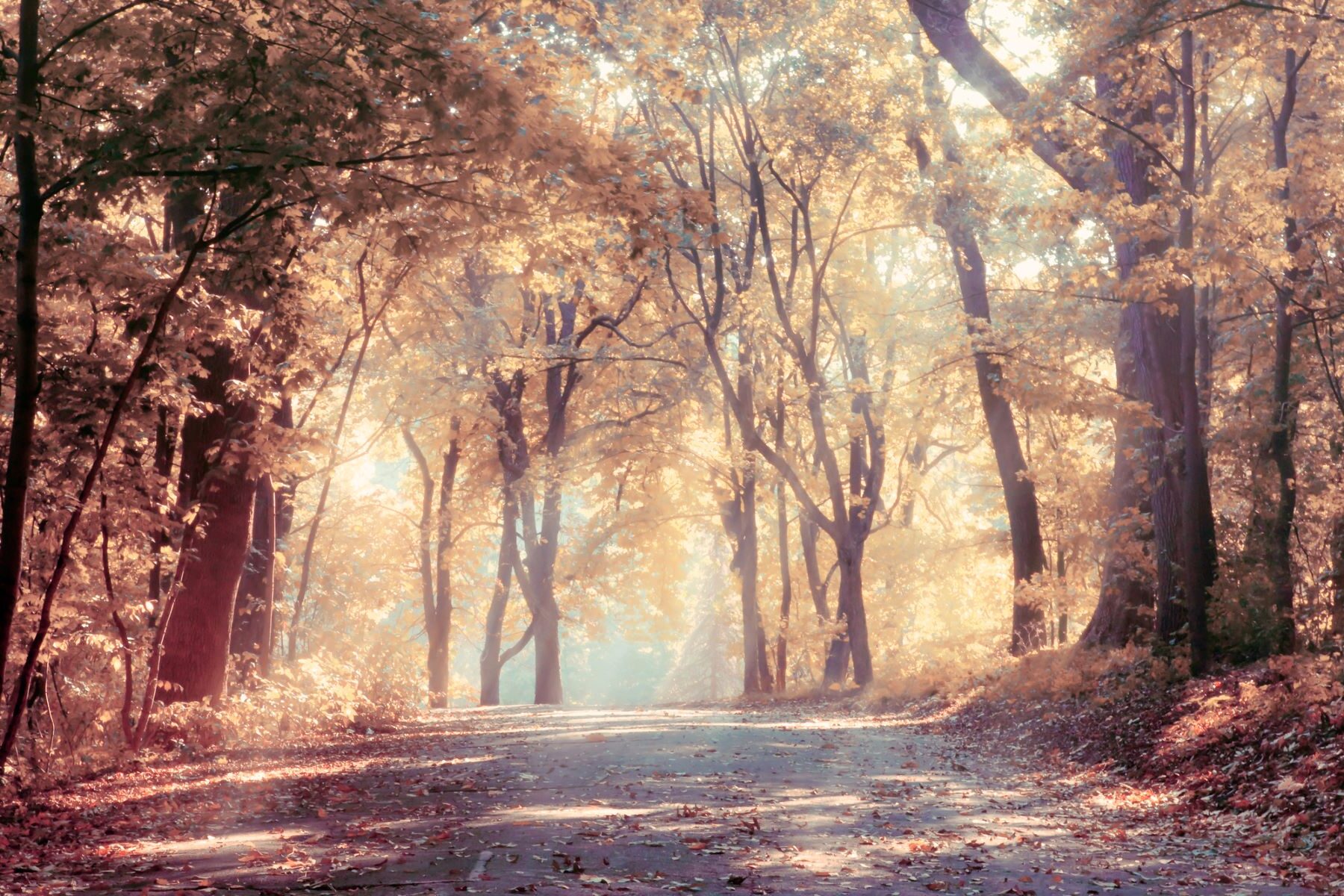Be brown, gold, maroon colors and shades that signal the arrival of autumnare those of the leaves of the trees that fall as soon as summer leaves us. Today it is time to explain why they turn from green to brown before breaking off the branches.
The falling of leaves in deciduous tree species – for example beech, oak and fruit trees – is one scheduled time in the fall, which is repeated every yearallowing the tree to prepare itself little by little. The first step is to recycle the most valuable nutrients contained in the leaves, so as not to lose them when they fall. So trees transfer nitrogen and some essential elements, which are more expensive to produce, from the leaves to the stems.
Secondly, since the autumn is accompanied by colder weather and fewer hours of light, the plants stop growing progressive photosynthesisbecause they don’t have all the light they need to complete the cycle correctly. The key molecule for photosynthesis is chlorophyll, so they no longer need it and stop producing it. And the same thing happens to the chlorophylls previously present in the leaves, which break down and disappear.
The loss of chlorophyll from the leaves, which is green, unmasks other pigments also found in the leaves, such as carotenes and anthocyanins, which are orange and red respectively. For this reason, the leaves are increasingly turning to the color of the other pigments that are now there we associate with the typical autumn colours.
Chromatic autumn
When the explosion of colors autumn It reaches a peak moment and the maximum diversity of colors is collected, just before the leaves fall, we say that that forest has reached its chromatic maximum. It is clear that this chromatic maximum is not uniform in all places and depends on the tree species in the forest and the region we observe. because the local climate plays a key roleAnd. However, the color of the beech forests is usually taken as a guideline and the main dates vary from mid-November.
Unfortunately, these dates are becoming increasingly unpredictable and the Earth’s colors are taking longer to appear. autumn in the forests of the country. The reason? The temperature increase in September and October. As we have said, the lack of daylight hours and the drop in temperatures It is the starting signal for the plant to stop photosynthesis and lose chlorophyll.
The problem is that it takes longer and longer for the cold to arrive and this beginning of autumn with mild temperatures confuses the plants, which think that it is still the end of summer and that it takes longer for the whole circuit to begin to cut the leaves to drop. So are the colors of the It also takes longer for carotenes and anthocyanins to be released.
Until now, experts pointed out that this delay in the chromatic maximum of the forests could be something specific and that it strongly depended on the weather, but now we see that it is an increasing trend, as we have seen several years in a row in which leaf fall is delayed.
As we said initially, the process of the appearance of the brown tones of the autumn It’s programmed and moves slowly, so if there’s any disruption, everything changes. And one of the most common malfunctions in the Mediterranean is drought.
When there is drought, trees do not have as much time to reabsorb valuable nutrients from the leaves and in an emergency they cut the connection between the stem and the leaves to minimize the surface area through which they lose water. In this case, the leaves dry up with all the nutrients and pigments passing through directly from green to dry brown, without the typical chromatic variation.
Key appearance
CREAF’s citizen observatory RitmeNatura has contributed to the study of leaf color changes in autumn in Catalonia, among other seasonal processes. And how does he do it? Thanks to the contributions of volunteer citizens!
Every time we go out into nature and see these color changes, we visualize data that scientists may need to study, e.g the consequences of climate change about the seasonal changes. Contributing by providing this data is very simple: just create a user in the iNaturalist application, join the RitmeNatura project on this platform and upload everything that we think might be interesting about the nature around us.
Collaboration with citizens is virtual when it comes to collecting information that is then valued and validated by scientists, but because they cannot be everywhere, they need all the help possible to decipher the unknowns of nature.

